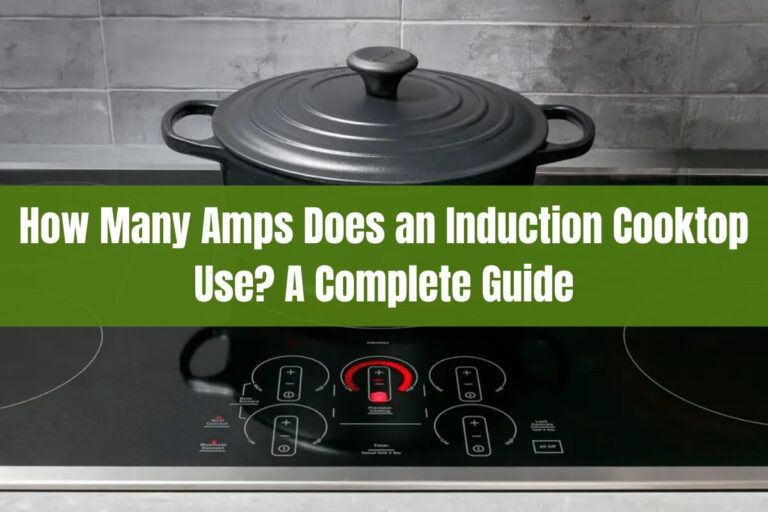
Induction cooktops are incredibly efficient and precise heating sources, but can they achieve the high temperatures needed to get that perfect sear on a steak or other meat? The ability to sear meat is a crucial factor for many home cooks when considering an induction cooktop. Yes, you can absolutely sear meat on an induction cooktop, and this article will explain exactly how to do it like a pro.
We’ll cover everything you need to know about searing meat on an induction cooktop, including:
- How induction technology works and why it can achieve high searing temperatures
- Tips for selecting the right cookware for searing on induction
- Step-by-step guides for searing different types of meat
- Techniques to maximize the searing capability of your induction cooktop
- Answers to common questions about searing on induction
Whether you’re a seasoned home chef or just getting started with induction cooking, this guide will equip you with the knowledge to create delicious seared meats with a crispy, flavorful crust every time.
How Induction Cooking Works
To understand why induction cooktops can indeed sear meat, we first need to look at how they function. Induction cooking uses electromagnetic energy to directly heat the cooking vessel instead of relying on thermal conduction from a heated surface.
The induction cooktop has an electromagnet coil that creates a magnetic field. When you place a ferrous (magnetic) cooking vessel on the cooktop, this magnetic field induces an electrical current in the metal. This current generates resistive heating that causes the pot or pan to become hot.
Since the heating occurs directly in the cookware through electromagnetism, there is no need for a traditional heating element that has to get red hot first. The cookware itself becomes the heat source, allowing induction to reach very high temperatures rapidly and precisely.
The Ability of Induction to Sear
Many people assume induction lacks the power to achieve the blistering high heat needed for a great sear. However, premium induction cooktops are more than capable of getting hot enough for searing meat.
Most quality induction cooktops have a power boost or maximum sear setting that can output between 3000-5000 watts of energy. At these high power levels, the cookware can easily exceed 600°F (315°C) – hot enough to achieve a beautiful caramelized sear on steaks, chops, and other cuts of meat.
In fact, some tests have shown that induction can sear even faster than powerful gas burners. A 2017 experiment by Yale Appliance found that a Wolf induction cooktop seared a ribeye steak in just 3 minutes and 35 seconds – nearly a full minute faster than a 22,000 BTU gas burner.
The rapid, ultra-intense heat produced by induction allows you to get that high-heat sear while adding less overall heat to the kitchen when compared to other methods. The focused electromagnetic energy heats just the cooking vessel, not the surrounding air or cooktop surface.
Choosing the Right Cookware for Searing
While induction cooktops can undoubtedly crank out the heat needed to sear, your cookware plays a vital role as well. The best cookware for searing on induction should have excellent heat retention and distribution properties.
Cast iron and carbon steel are two of the top choices for searing due to their ability to get ripping hot and maintain that heat. The dense metals heat evenly and have incredible heat retention. A hot cast iron or carbon steel pan will produce beautiful sear marks and a crisp, caramelized crust.
Other good options include enameled cast iron and some types of stainless steel cookware designed for induction. Avoid pure aluminum or non-magnetic stainless steel pans as they won’t work on an induction surface.
Be sure to use cookware with a smooth, flat bottom that makes full contact with the induction element. Pans with grooved or bumpy bottoms can cause hotspots and uneven cooking.
The Step-by-Step Guide to Searing Meat on Induction
Now that we’ve covered the basics, let’s get into the actual steps for getting that perfect sear on your meats using an induction cooktop:
- Choose and Prepare Your Meat: Select fresh, high-quality cuts of meat for the best searing results. Thicker cuts like ribeye, strip, and porterhouse steaks work beautifully. Pat the meat dry thoroughly with paper towels to remove any excess moisture.
- Preheat Your Pan Empty: Contrary to some manufacturer recommendations, it is perfectly safe to preheat your induction-safe pan empty on the induction cooktop. Start by setting the cooktop to its maximum heat or “sear” setting. Allow the pan to get ripping hot – water droplets should sizzle and bead rapidly if sprinkled in the pan.
- Add Your Oil or Butter: Once the pan is hot, add just enough oil or butter to lightly coat the bottom. Oils with high smoke points like avocado, grapeseed, or refined olive oil work nicely.
- Add the Meat and Resist Moving: Carefully place the meat in the hot pan – you should hear an immediate loud sizzle. Resist the urge to move it. Let it sear undisturbed for 2-3 minutes to develop that desirable crust.
- Finish Searing and Flip: After 2-3 minutes, use tongs to flip each piece of meat and sear on the other side, again leaving it undisturbed. You’ll notice a gorgeous browning.
- Finish Cooking and Rest: For thicker cuts, you may need to finish cooking in the oven after searing both sides. Or, reduce heat and continue searing with tongs, flipping every 2 minutes. Finally, let rest for 5-10 minutes for juices to redistribute.
While searing chicken, pork chops, or fish on induction, follow the same principles of using a preheated pan on maximum heat, patting proteins dry first, and not crowding the pan.
Tips to Maximize the Searing Power
To truly master searing meat on your induction cooktop, keep these tips and techniques in mind:
- Let meat come to room temp first: Taking meat out of the fridge 30-60 minutes before cooking allows for more even searing.
- Use stainless steel, carbon steel, or cast iron: These dense metals distribute heat beautifully and retain it well.
- Preheat your pan empty on maximum heat: Getting that pan screaming hot before adding anything is crucial.
- Don’t overcrowd the pan: Leave space between pieces so moisture can escape for efficient browning.
- Limit flipping and moving meat: Let it sear undisturbed to form that desirable crust.
- Pat proteins very dry before searing: Any excess moisture will steam instead of sear.
- Consider a cast iron grill plate or griddle: These are perfect for leaving beautiful sear marks.
Common Questions About Searing on Induction
Finally, let’s address a few common questions people have about achieving a great sear on an induction cooktop:
Will searing create a ton of smoke?
Yes, searing at the high heats required will produce some smoke – this is normal. Be sure to use your venting system and consider searing near an open window.
Can induction cooktops warp pans or crack cast iron?
Quality induction cooktops should not warp cookware if heated gradually and not left bone-dry for extended periods of time. Cast iron is very durable and shouldn’t crack from normal use.
Is searing unhealthy or unsafe?
Searing creates harmless browning reactions that produce wonderful flavors. As long as you aren’t burning food excessively, an induction-seared meal is completely safe to enjoy.
With its speed, precision, and ability to reach blistering temperatures, induction is an exceptional way to sear meat at home. Implement the tips above for a flavorful, professionally-seared crust every time.






